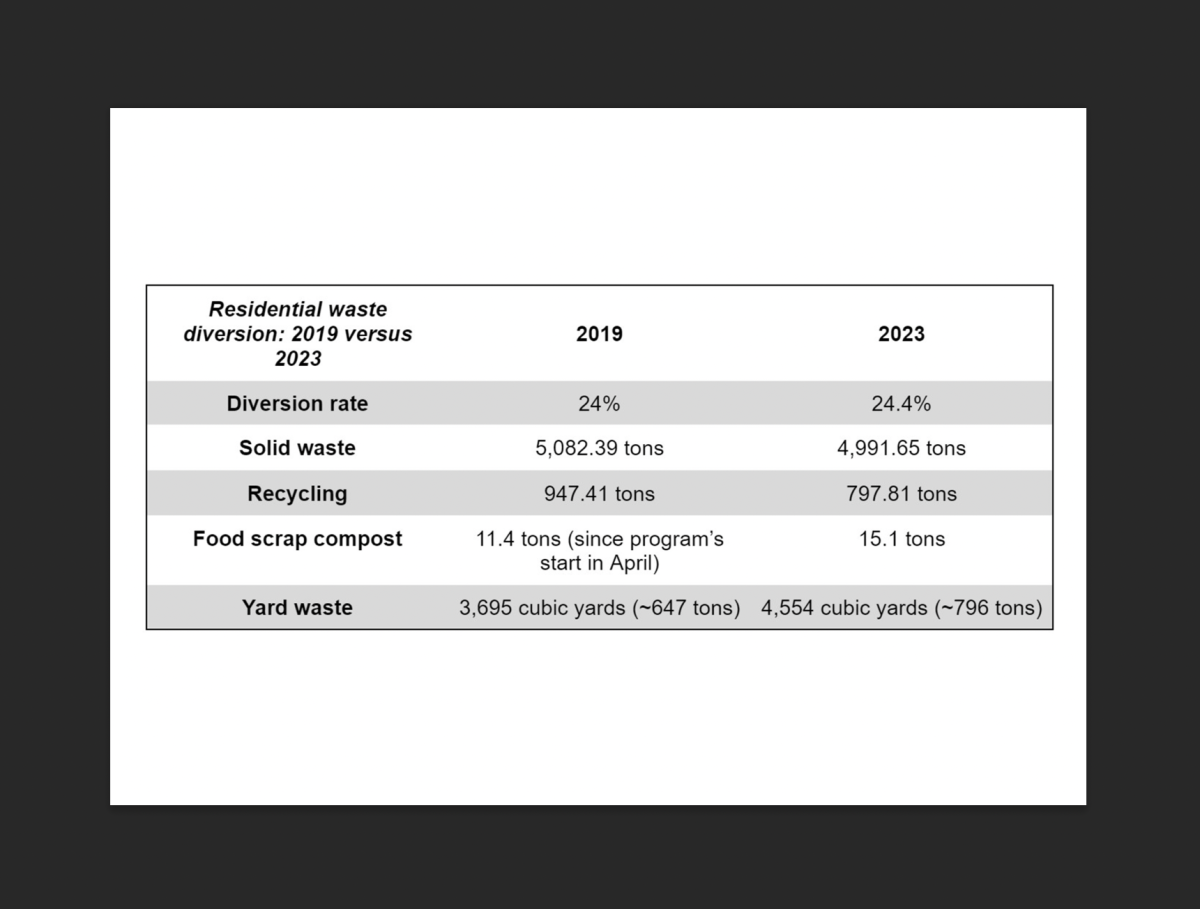This month marks the first year since the adoption of “Towards a Sustainable, Resilient Future,” the City of Oxford’s Climate Action Plan.
The main goal of the plan is to reach “community-wide net neutrality” by 2045, which is based on the results of a greenhouse gas emissions inventory completed in 2019.
But, various facets that will aid Oxford in becoming a more sustainable and environmentally friendly city are also included.
“Some things take a lot more time than we expected,” Reena Murphy, Oxford’s sustainability coordinator, said. “Some things are like, ‘Oh, OK. That was actually a bit simpler than anticipated.’”
Here are updates on some of the targets listed within the plan:
Convert all street and public lighting to energy-efficient LEDs
Murphy said light-emitting diodes (LEDs) have been installed in 607 street lights, which are owned by Duke Energy. It costs $269,000 to replace the lights, but this change is estimated to save the city roughly $50,000 each year. LEDs last approximately 15 years.
Conduct a feasibility study for solarizing all City facilities by 2023
The study has yet to be completed. After a request for proposals, it was discovered that just conducting the study would have a large price tag, according to Murphy. The only response for a proposal the city received was for more than $45,000. Instead, the city is in the process of receiving a preliminary solar assessment from Power a Clean Future Ohio, in which Oxford holds a membership.
Reduce methane emissions from the closed sanitary landfill through the installation of a solar flare by 2023
Oxford’s landfill has 23 gas vents that discharge the landfill’s emissions. According to David Treleaven, Oxford’s Environmental Specialist, vent No. 23 produces roughly one-third of the carbon dioxide equivalent for the entire landfill.
Since the roughly $15,000 installation of a solar flare on vent No. 23 last year, the landfill’s total carbon dioxide equivalent emissions have decreased almost 30%, according to Murphy. The solar flare also reduced 98% of the methane emitted from that particular vent.
“Honestly,” Murphy said, “I think the flare is a great example of a climate program that had some initial demands, [but] … we don’t need constant staffing of it.”
Expand recycling and composting to all city facilities by 2024
All city facilities had recycling before the adoption of the plan, but Murphy said composting has been more of a challenge. As compost can smell when left out at room temperature, one idea was to freeze it.
“[I] literally went around to each building and looked at the freezers, and these are full because, of course, they’re freezers for staff,” Murphy said.
Murphy said providing composting to all city facilities will most likely not occur by the end of this year, and is still something that needs to be solved.
Increase community waste diversion through composting
Oxford has a compost dropoff program that is collected by GoZERO Services, which the city contracts out, according to Treleaven. Any major trends in total community waste diversion are yet to be seen.
However, these waste diversion options create other problems. Treleaven said trash is often mixed in with the waste that can be recycled or composted, such as plastic mulch bags in yard waste bags.

“If somebody knows it shouldn’t be in there,” Treleaven said, “it’s in the very bottom … Then they put their yard waste on top of it.”
Last year, 445.5 gallons of trash were disposed of from yard waste bags alone, according to Treleaven.
Expand city tree canopy
Between 3,400 and 3,600 public and street trees are in Oxford, according to Treleaven, who is also in charge of urban forestry.
Treleaven said this year’s operating budget is $42,500 and covers pruning, removal and other maintenance that is all contracted out. The trees planted in Oxford’s tree lawns cost around $500 per tree.
Treleaven said he is considering planting trees in the southern end of Mile Square this year. This specific area’s tree lawn – the gap between the sidewalk and the curb – has a lot of open space, which Treleaven said he is looking to fill.
However, there are some areas of Oxford, specifically the northwest corner of Mile Square between the bars and Miami University residence halls, where Treleaven said he tries to refrain from planting trees because they can get damaged or destroyed. The tree lawn surrounding student rental properties can also pose a problem.
“If I plant a tree,” Treleaven said, “somebody tears it out. Plant another one, somebody tears it out. I’ll usually let it sit for two [or] three years before I go back, figuring whoever’s doing that has either moved, graduated or dropped out. And then I try it again. Sometimes it works and sometimes it doesn’t.”







